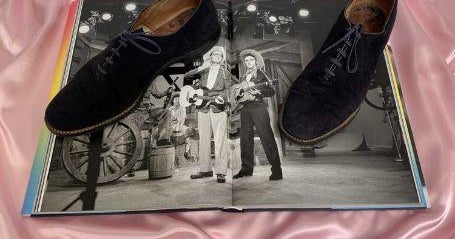Eric Hazan, an influential publisher who brought to France’s attention some of the country’s most incendiary left-wing writers and who was himself a distinctive historian of Paris, died there on June 6. He was 87.
His death was confirmed by the publishing house he founded, La Fabrique, which released no other details. Mr. Hazan had been treated for cancer.
From an old building in a working-class neighborhood of Paris, Mr. Hazan’s tiny firm wielded an outsize influence, publishing provocative writers like the leftist philosophers Alain Badiou and Jacques Rancière, the scholar Edward Said and the historian Enzo Traverso.
La Fabrique has tackled colonialism, the rights of Palestinians, Israeli politics and the Holocaust, all guided by the hostility that Mr. Hazan, a son of immigrant Jews who had been forced into hiding during World War II, felt for capitalism, ethnocentrism and all forms of nationalism.
But it was as a politically engaged historian of Paris that Mr. Hazan made his greatest mark, writing a series of passionate and erudite historical guides to the city he loved but whose future he feared for, at least one of which won wide acclaim on both sides of the Atlantic.
Mr. Hazan could read the streets of Paris like few others, unearthing the historical significance of street signs, plaques on buildings, dents in a wall and what he called the “psychogeography” of entire neighborhoods.
As a former surgeon who underwent a midlife conversion — he did not publish his first book until he was 66 — Mr. Hazan dissected the city’s neighborhoods with clinical precision. He would then bring them to life by evoking generations of ghosts, from the city’s medieval history onward.
“The Champs-Élysées is the principal axis of Collaborationist Paris. There is almost a tradition there,” Mr. Hazan wrote in his 2002 book, “L’Invention de Paris” (“The Invention of Paris”). He went on to invoke not just the complaisance of bourgeois Parisians toward the Nazis during the occupation, but also their lesser-known clamor for the Prussian invaders who, they hoped, would crush the rebellious Communards in 1871.
Occupied Paris, with its network of SS torture centers; revolutionary Paris, with its hidden landmarks of insurrection; imperial Paris, where the heavy hand of authoritarian rulers can be easily discerned, as on the Rue de Rivoli — all these came under Mr. Hazan’s scalpel.
Where he found what he called “traces” of the city wall that was built on the orders of King Philip II in the late 12th and early 13th centuries, he meant not just the wall’s physical remnants, of which there are few, but also what he referred to as its “urban consequences” — the way it continues to delineate Paris neighborhoods to this day.
The writer and critic Lucy Sante, writing in The New York Review of Books in 2010, described “The Invention of Paris” as “one of the greatest books about the city anyone has written in decades, towering over a crowded field, passionate and lyrical and sweeping and immediate.”
Mr. Hazan’s passion derived in part from his despair over the disappearance of the old working- and middle-class Paris under a vast tide of tourism, gentrification and ostentatious wealth. He lamented, for instance, the “complete museumification” of the area around the Church of St.-Germain-des-Prés, on the Left Bank, which he said had been sterilized by an influx of big money and mass tourism, leaving “nothing of its postwar glory.”
On much of the Right Bank, where luxury stores for affluent tourists have taken over, “the charm is gone,” he told The Guardian in 2011. “It’s cold.”
He predicted, with perhaps more hope than realism, that the city would be saved if it could “again leap its boundaries” and incorporate the ring of inner suburbs where millions of immigrant families live in poverty and isolation.
Other books about Paris by Mr. Hazan that have been translated include “Paris in Turmoil: A City Between Past and Future”; “A Walk Through Paris: A Radical Exploration”; “A History of the Barricade”; and “Balzac’s Paris: The City as Human Comedy.”
The figure of Mr. Hazan himself is evident in these books, an inveterate stroller alert to the stories the stones around him were telling.
“It’s not only that he was interested in everything and his engagement with humanist culture was far broader and deeper than so many of the ‘intellectuals’ who smirk at militant commitments of his kind,” Mr. Rancière, the philosopher, wrote in a tribute after Mr. Hazan’s death. “It was because he fought for a world of the widest and richest experience, and did not separate the work of knowledge and the emotions of art from the passion of justice.”
Eric Hazan was born on July 23, 1936, in Neuilly-sur-Seine, a well-to-do suburb of Paris. His father, Fernand Hazan, a prominent publisher of art books, was born in Cairo, where Fernand’s father owned a bookstore. Eric’s mother, Blanche (Pascal) Hazan, who was born in Romania, worked at the publishing house with her husband.
The family fled south after the German invasion in 1940, settling first in Marseille, where Fernand Hazan quickly got the family on its feet by establishing a candy factory, using honey imported from Guinea and made by spiders, as Mr. Hazan recalled in a series of interviews with France Culture radio in 2018.
The money his father made enabled the family to buy a house in nearby Antibes, which was then under the control of the more tolerant Italians, and the family remained hidden there for the duration of the war in what Mr. Hazan recalled as self-sufficient “autarky.”
Eric did not go to school during this period, but he was never frightened, he remembered, because his parents had transformed their preparations for a possible roundup and deportation into “a game of cops and robbers.” As a result of that early menace, Mr. Hazan decided that “France is not my mother,” as he told Le Monde in 2021.
After the war, he attended Lycée Louis-le-Grand, one of Paris’s leading high schools. At the urging of his father but against his inclinations, he went on to become a doctor and a surgeon in Paris hospitals.
Mr. Hazan went to newly independent Algeria in 1962 to lend his services, and to Lebanon in 1975 to practice medicine in Palestinian refugee camps. Two years before abortion was legalized in France in 1975, he was one of the first doctors to publicly acknowledge having performed the procedure.
But, at the age of 47, he decided that he’d had enough of medicine and surgery, and he took over his father’s publishing business. He eventually sold it to Hachette in 1992 and started his own publishing house in 1998.
La Fabrique, run out of a single room, became “a reference point for the decolonization movement,” Mr. Traverso recalled in The New Statesman. It also produced a brief but celebrated run-in with the authorities for Mr. Hazan: After the bizarre and farcical ‘Tarnac Affair’ in 2008, when self-styled anarchist revolutionaries sabotaged some rail lines, and a copy of “L’Insurrection Qui Vient,” (“The Coming Revolution”), published by La Fabrique, was found among the possessions of those arrested. Mr. Hazan was interrogated by the police; sales of the book shot up.
Information about his survivors was not immediately available.
Mr. Hazan believed in the idea of revolution and the renewing possibilities of insurrection, even to the extent of admiring Maximilien Robespierre, the French Revolution’s guide in its most bloodstained phase.
“Changing the world was for him not a program for the future but a daily task of adjusting our vision and finding the right words,” Mr. Rancière wrote of Mr. Hazan. “And he understood that revolt is itself a means of discovery.”















































